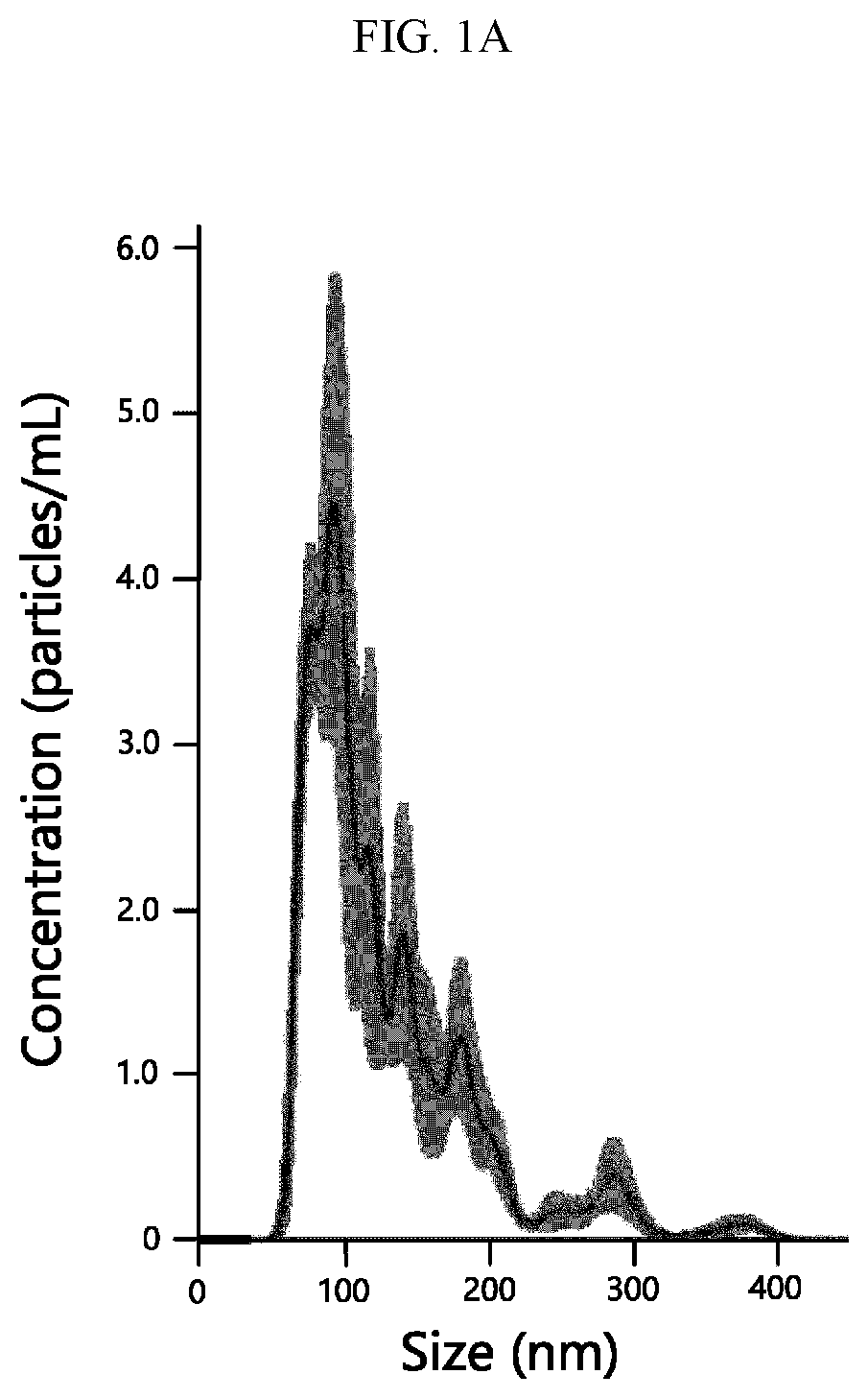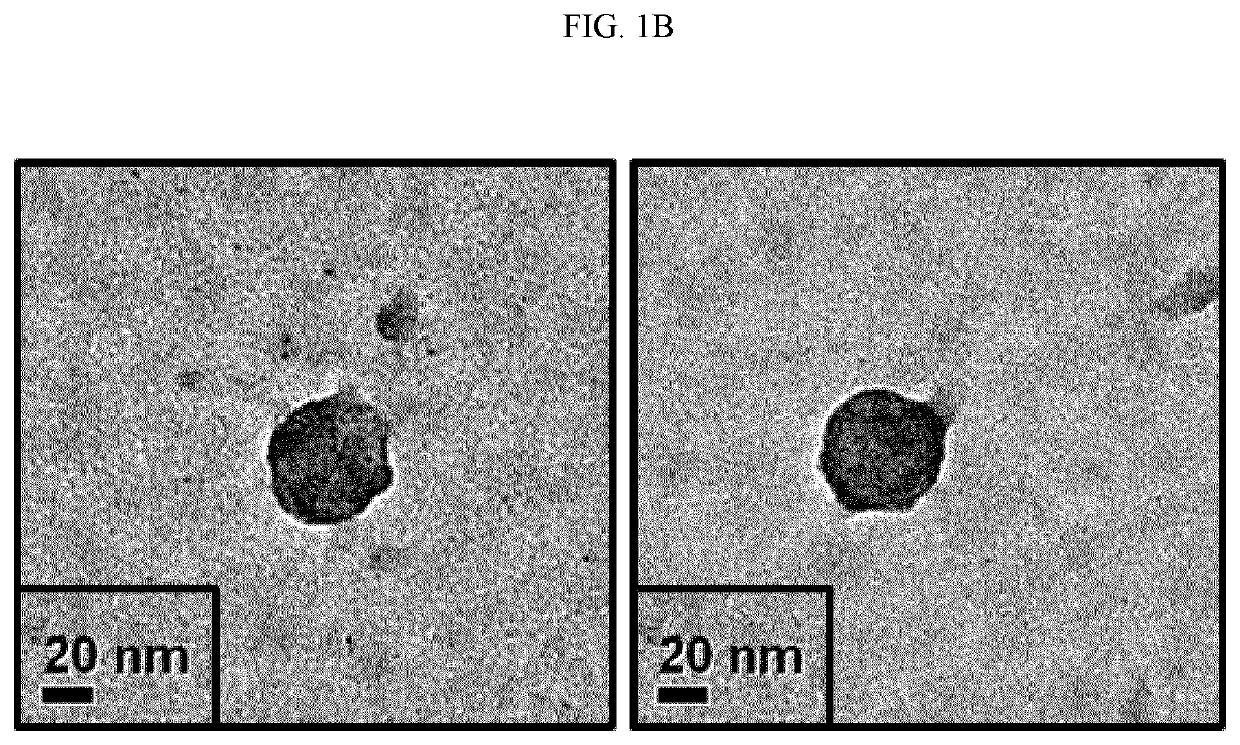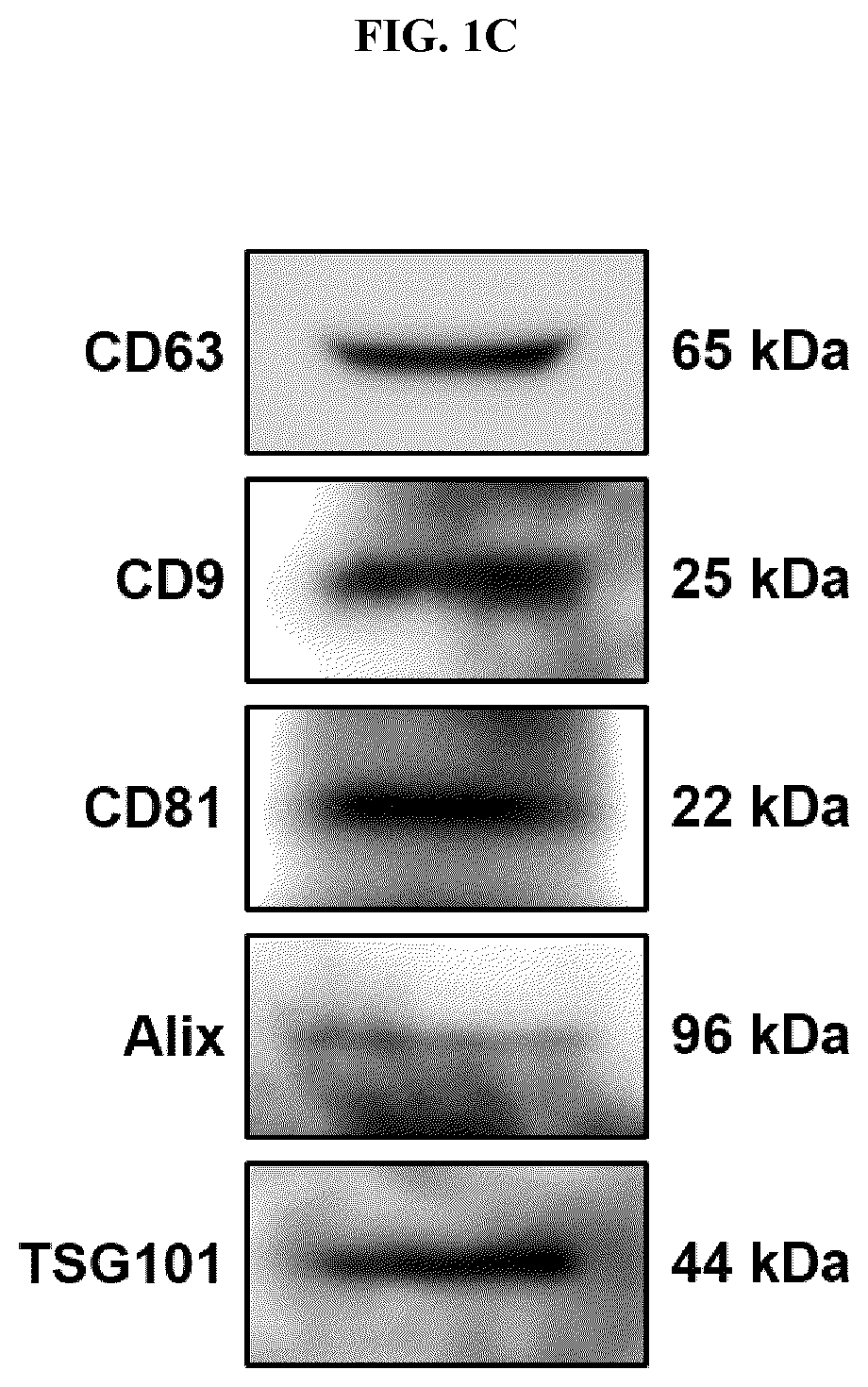Method for lyophilizing exosome
a technology of exosomes and cryoprotectants, applied in the field of lyophilizing exosomes, can solve the problems of unfavorable cell survival, unfavorable cell survival, and inability to maintain the function of active ingredients in the cell, and achieve the effect of good appearan
- Summary
- Abstract
- Description
- Claims
- Application Information
AI Technical Summary
Benefits of technology
Problems solved by technology
Method used
Image
Examples
example 1
ure
[0056]According to a cell culture method known in the technical field to which the present invention pertains, adipose-derived stem cells were cultured at 37° C. under 5% CO2. Next, the cells were washed with phosphate-buffered saline (purchased from ThermoFisher Scientific), and then the medium was replaced with serum-free, phenol red-free medium, and the cells were cultured for 1 to 10 days. The supernatant (hereinafter, referred to as “conditioned medium”) was recovered.
[0057]In order to obtain exosomes having a uniform particle size distribution and high purity in an exosome isolation process, 2 wt % of trehalose was added to the conditioned medium. After addition of trehalose, the conditioned medium was filtered through 0.22 μm filter to remove impurities, such as cell debris, waste, macroparticles and the like. From the filtered conditioned medium, exosomes were immediately isolated. In addition, the filtered conditioned medium was stored in a refrigerator (10° C. or below)...
example 2
and Purification of Exosomes by TFF Method
[0058]For isolating, concentrating and diafiltrating exosomes from the conditioned medium filtered through 0.22 μm filter in Example 1, TFF method was used. As a filter for TFF method, a cartridge filter (known as a hollow fiber filter; purchased from GE Healthcare) or a cassette filter (purchased from Pall, Sartorius or Merck Millipore) was used. The TFF filter may be selected with various molecular weight cutoffs (MWCOs). Using the filter having selected MWCO, exosomes were isolated and concentrated, and particles, proteins, lipids, nucleic acids, low-molecular-weight compounds, etc., were removed, which are smaller than the MWCO.
[0059]To isolate and concentrate exosomes, a TFF filter having MWCO of 100,000 Da (Dalton), 300,000 Da or 500,000 Da was used. Exosomes were isolated from the conditioned medium by removing substances smaller than the MWCO and concentrating the conditioned medium to a volume of about 1 / 100 to 1 / 25 by the TFF metho...
example 3
of Characteristics of Isolated Exosomes
[0061]The particle size and concentration of the isolated exosomes were measured by nanoparticle tracking analysis (NTA) instrument (purchased from Malvern). The uniformity and size of the isolated exosomes were analyzed by transmission electron microscopy (TEM). FIGS. 1A and 1B show the results of NTA and TEM of the exosomes isolated by the isolation method according to one embodiment of the present invention.
[0062]FIG. 1C shows the results of Western blot analysis for positive markers of the exosomes isolated by the isolation method according to one embodiment of the present invention. As shown therein, the presence of CD63, CD9, CD81, Alix and TSG101 markers was confirmed. As antibodies for each of the markers, anti-CD63, anti-CD9, anti-CD81, anti-Alix and anti-TSG101 were used, respectively.
[0063]FIG. 1D shows the results of Western blot analysis for negative markers of the exosomes isolated by the isolation method according to one embodime...
PUM
| Property | Measurement | Unit |
|---|---|---|
| concentration | aaaaa | aaaaa |
| concentration | aaaaa | aaaaa |
| concentration | aaaaa | aaaaa |
Abstract
Description
Claims
Application Information
 Login to View More
Login to View More - R&D
- Intellectual Property
- Life Sciences
- Materials
- Tech Scout
- Unparalleled Data Quality
- Higher Quality Content
- 60% Fewer Hallucinations
Browse by: Latest US Patents, China's latest patents, Technical Efficacy Thesaurus, Application Domain, Technology Topic, Popular Technical Reports.
© 2025 PatSnap. All rights reserved.Legal|Privacy policy|Modern Slavery Act Transparency Statement|Sitemap|About US| Contact US: help@patsnap.com



